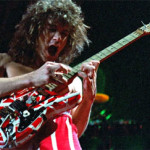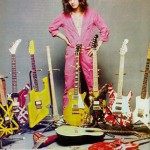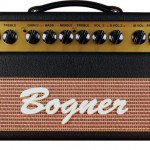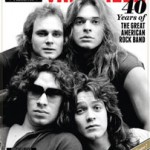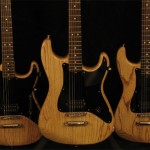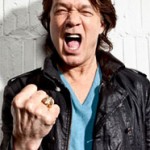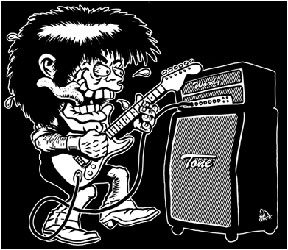About
What is WoodyTone?
If you have to ask, then I’m not sure I can help you. But I’ll try because really, it’s not too tough.
WoodyTone is exactly what it sounds like, including the double entendre. To me it’s an electric guitar (wood) into an organic amp (tubes), along with everything in the signal chain (pickups, strings, pedals). But the end result is a four-letter word: TONE.
You know it when you hear it. Let’s take a few well-known guitar examples, by musician:
> Edward Van Halen’s “old” sound = Northern ash body + maple/maple neck + old Gibson PAF pickup + vintage Fender bridge + nickel ultralight strings + chain a couple of old Marshalls together with pedals and EQs here and there + play like Ed = WoodyTone.
> Angus Young = Old Gibson SG + old Marshalls + hit the strings hard + keep it deceptively simple = WoodyTone.
> Jimi Hendrix = Upside-down alder/maple Strat + a pile of effects + old Marshalls + Jimi = WoodyTone.
> Duane Allman = Les Paul or SG + old Marshall head + Coricidin bottle + unbelievable feel = WoodyTone.
> Stevie Ray Vaughan = ’59/’61 Strat (alder/pao ferro) + HEAVY strings (13s) + Ibanez TS-808 Tube Screamer + Vox or Crybaby wah + Fender amps (Blackface 1967 Super Reverb and/or tweed 1959 Bassman) + hands that could choke an ox = WoodyTone.
The examples could go on and on, thankfully (Billy Gibbons, Joe Walsh, Yngwie Malmsteen, Joe Perry, Ace Frehley, Derek Trucks, Ronnie and Keith, etc). In the guitar realm, it’s not all vintage sounds — though it is often “vintage” players. For example, George Lynch of ’80s Dokken fame (and a diehard tone-hunter) has gotten WoodyTone out of a baritone electric with EMGs and high-gain modern amps. So it can be done.
WoodyTone also is a big part of jazz, the blues and other forms of music: Ever hear Michael Hedges? You might love WoodyTone basses, WoodyTone drums, who knows what else is out there.
Bottom line: You know it when you hear it. WoodyTone = ToneWoody (as in “you get one” — ladies, please substitute the word “excited” for “one”).
So why the site?
Because I know I’m not the only WoodyTone-chasing and -loving guy out there, and because this is the kind of stuff I would love to read about every day. So rather than hope one of the guitar mags will have a couple pages a few times a year on the stuff I want to read about it, I’m doing it, and will feed the WoodyTonalicious addiction thataway.
Who started it?
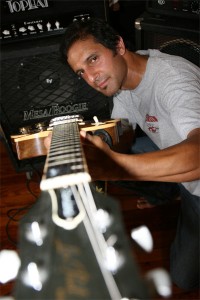 Hello, my name is Jay and I’m a tone-freak. A WoodyTone-freak.
Hello, my name is Jay and I’m a tone-freak. A WoodyTone-freak.
I was in high school in the ’80s, and the bands I played in covered tunes written by all the guitar masters of the time (Eddie Van Halen, Randy Rhoads, Alex Lifeson, etc.). We had the hair, guitars made by Kramer and Ibanez (mostly), and whatever amps we could afford, plus a few pedals. Little did we know how good we had it.
That era — post-Zep, tail end of KISS, beginning of the metal 80s, VH ruled the world, Back in Black, pre-Poison, pre-Pro Tools — was great. Still is.
Since I’ve gotten older, and seen what passes for popular music these days (not all of it), I appreciate all of that tone, that playing, that singing, that phrasing and songwriting a lot more. Guitar-wise, some of the newer musicians have that “stuff” too, though it’s not available in the same quantity as it was in the ’70s and early ’80s. And it seems like there was more WoodyTone before that period than after it.
I still love that stuff but I’m not all about hard rock. Steve Morse is mind-blowing, Hendrix is too as is the very Hendrix-like Doyle Bramhall II. Beethoven is a favorite of mine. Can’t get more woody or more intense than that. It’s all about the wood.
Like you, if you’re a guitar player, I’ve owned more than my fair share of amps, guitars, pickups and effects through the years, and sold a few I never should have. I still can’t get that early ’70s Marshall Super Bass out of my mind — but I needed the money!
Right now the guitar I play the most is a natural-top 1980 Les Paul Standard, of course named…Woody. The rest are an ’80s alder/ebony Warmoth (Floyd Rose, EVH Frankenstein humbucker), a 1996 Gibson Les Paul Classic (stock) and a ’70s Ibanez Destroyer (stock). On the rare occasion when the wife and kids are out of the house without me, I crank up a Marshall plexi-style head through a 4×12 cab with Greenbacks (6402s).
Edward Van Halen is my favorite guitarist, so you might see a disproportionate amount here about him and his tone/technique. But I admire many other musicians.
Beyond that, I’ve been in journalism and publishing in one form or another for two decades now. That should mean you get high-quality writing on this site — with that somehow now-undervalued quality in journalism: ethics. If you find any typos or factual errors, please point them out so I can be professionally embarrassed.
Note to Artists/Musicians/Manufacturers
The ’80s was the last time I regularly gigged with any band. So I am a guitar hack. Ergo I am not nearly in the same league as any full-time working musician or anyone else in the music biz. Because of that, I will endeavor to couch any criticisms with due respect. In the event that you do not read them that way, please do not take these opinions personally as they are not intended that way. If you are written about on this site, it means you are admired and appreciated.



